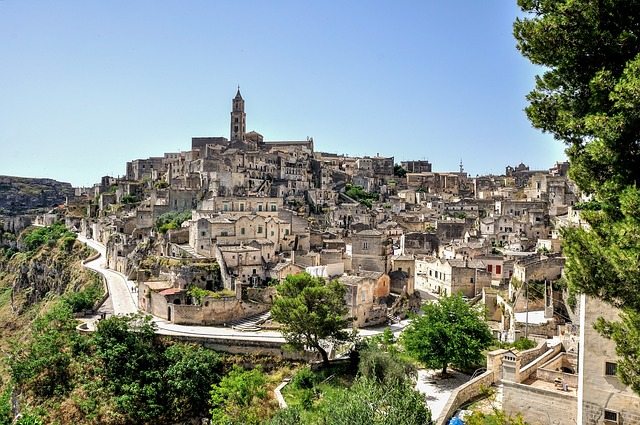Matera: UNESCO World Heritage Site and European Capital of Culture 2019 in Italy
This small corner of southern Italy has recently come out of the shadows and is known mainly for its dwellings carved into the rock. However, in the 1950s it was still considered“a disgrace“to Italy. People lived in rock dwellings in the Sassi di Matera, sharing their homes with livestock. The dwellings were very unhygienic, mainly due to overcrowding, disease, and poverty. The inhabitants were evacuated and moved to two-story houses on the outskirts of town.Today, these hewn buildings are UNESCO-listed and the once forgotten town is coming back to life. Now it can open its doors to tourism.

This is a truly magical place with a very impressive atmosphere. Tufa houses, rock-cut buildings, churches, and hundreds of man-made caves are spread densely over the hills.The buildings are connected by narrow, steep streets. There are many museums and souvenir shops. The spectacular view from the Parco della Murgiea Materana is particularly impressive.The 13th-century stone cathedral of Santa Maria della Bruna, on the heights of the Sassi, is decorated with Baroque ornaments, stuccoes, and paintings. Artifacts from the Bronze Age attest to the presence of humans during this period, making Matera one of the oldest inhabited cities in the world
.
No wonder filmmakers chose this amazing and mysterious place as the setting for their films. In Mel Gibson\’s “The Passion of the Christ,” the Last Supper takes place in the church of San Nicola dei Grechi. The famous Italian director Pier Paolo Pasolini also chose this city as the setting for his film “The Gospel According to St. Matthew.”
There are also several cozy, rustic restaurants. For example, one of them, Baccanti Ristorante, offers many hearty dishes, such as the wonderful podrico cheese served with pork sausage as an appetizer, or lamb chops and veal meat served with vegetables.